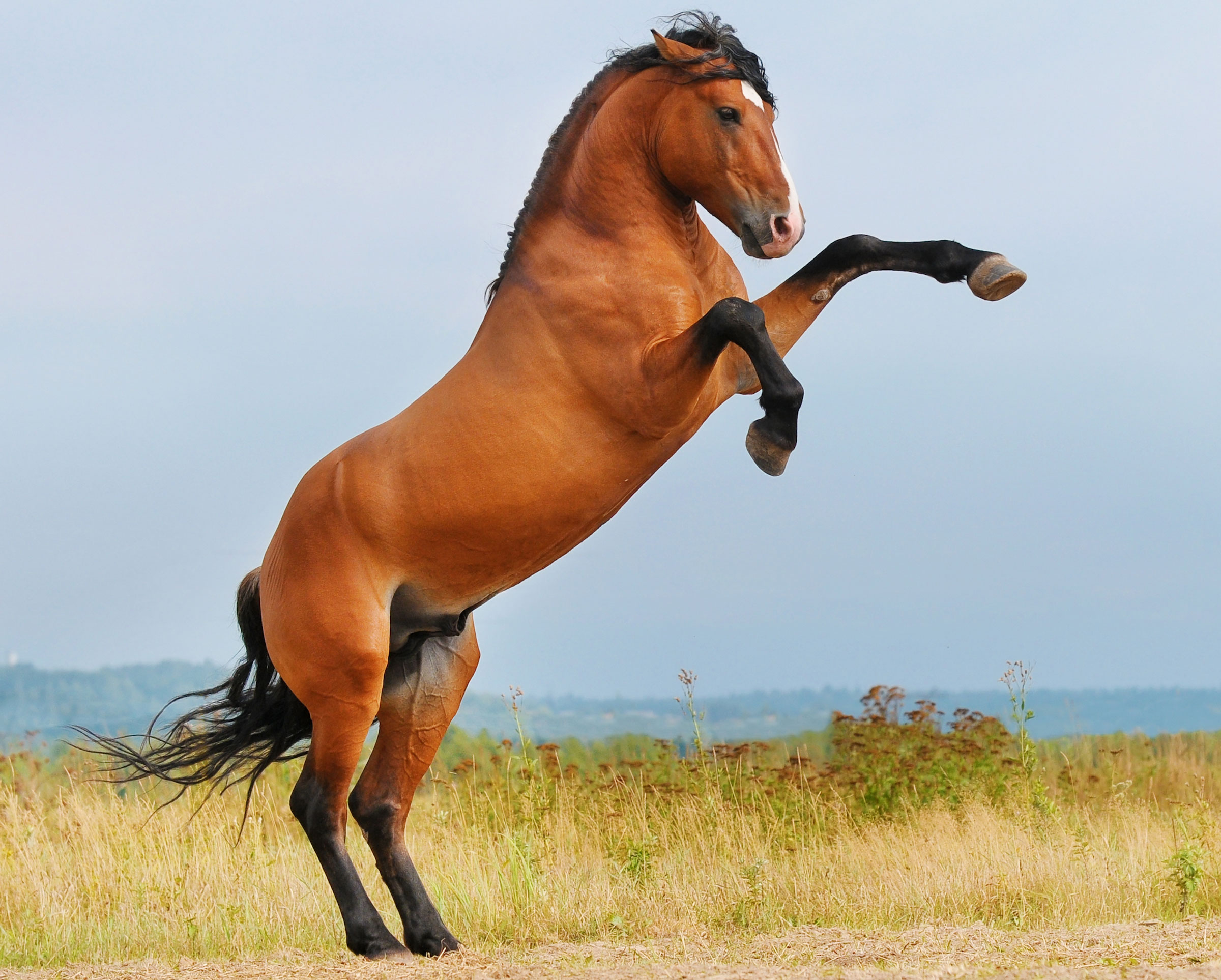
The goal of any breeding program is to produce strong, sound foals. To do this there are several factors involved, including genetics, environment and nutrition. Nutrition is a critical piece of any successful breeding operation and must be considered for stallions, mares and foals. In this article we will focus on feeding the stallion.
The stallion is expected to be in top health, physically fit and able to perform on demand when a mare arrives at the breeding shed or when semen is artificially collected. Nutrition certainly plays a key role in maintaining the health and condition of the stallion before, during and after the breeding season.
A stallion generally has higher nutritional maintenance requirements that a mare or gelding. The energy requirement of the stallion during the breeding season depends on his breeding or collection frequency.
A breeding stallion, on the average, has daily nutrient requirements that are 25% above maintenance of a mature stallion during the off season. To meet the increased nutrient requirements associated with the breeding season, stallions should be provided a properly balanced concentrate. On the average stallions will need a combination of roughage and concentrate ranging from 1.5% to 2.5% of body weight daily. It is important to select a concentrate feed that, when fed at levels to maintain weight and support activity, will also meet protein, mineral and vitamin requirements.
Routine evaluation of your stallion’s body condition can be an effective tool for determining if you are underfeeding or overfeeding your stallion. An extremely thin stallion (Body condition score, BCS 3 or less on a scale of 1-9) might not have the energy stores needed to make it through an active breeding season without compromising performance and fertility. Similarly, the stallion should not be allowed to become fat (BCS of 8 or 9).
Fat-supplemented concentrates can be very practical and beneficial for old stallions that tend to be thin and for horses that seem extremely active, such as those that walk the fenceline of a paddock, those being pasture-bred and stallions in training. The fat-supplemented feeds provide more energy than a traditional cereal grain-based concentrate.
Ideally, stallions should be maintained in a moderate body condition (score of 5 or 6) year-round. A moderate body condition will provide enough fat cover over the ribs, making them hard to see, but still easy to palpate. The withers will appear rounded and the shoulders and neck will blend smoothly into the body. Some stallions might lose weight during a breeding season, while others are able to maintain themselves in good condition. For stallions that tend to lose condition, a higher degree of body fatness (condition score of 6 or 7) should be established before the breeding season to ensure stallions do not become too thin during the season.
Recent research has revealed the benefits of supplementing stallions with Omega 3 fatty acids. Docosahexaenoic acid (DHA; an Omega 3 fatty acid) has been shown to significantly increase the number of sperm per ejaculate, increase motility of sperm and decrease dead and abnormal sperm compared to non-supplemented stallions. Supplementation with DHA also increases the number of motile sperm after cooled or frozen storage.
A further improvement in stallion semen quality (motility, longevity, morphology as well as total sperm count) has been shown after dietary intake of antioxidants in combination with Omega 3 fatty acids. Vitamin E is the primary antioxidant in seminal cell membranes and acts as a major protectant against oxidative stress. Antioxidants in seminal plasma protect sperm against oxidative stress, which might be induced by cooling and freezing, common methods of storage and transportation of equine semen.
During the off season, most stallions can be maintained on good-quality forage and a concentrated vitamin and mineral pellet.
The most important aspect of stallion nutrition management is feeding a balanced diet and realizing that there are huge variations in energy intake required to maintain proper body condition from one stallion to another. A balanced ration of good-quality hay and grain fed to maintain optimum body condition is the key to successful stallion nutrition management.
This article was written by Dr. Tania Cubitt of Performance Horse Nutrition. For more equine nutrition information from Standlee visit standleeforage.com.


